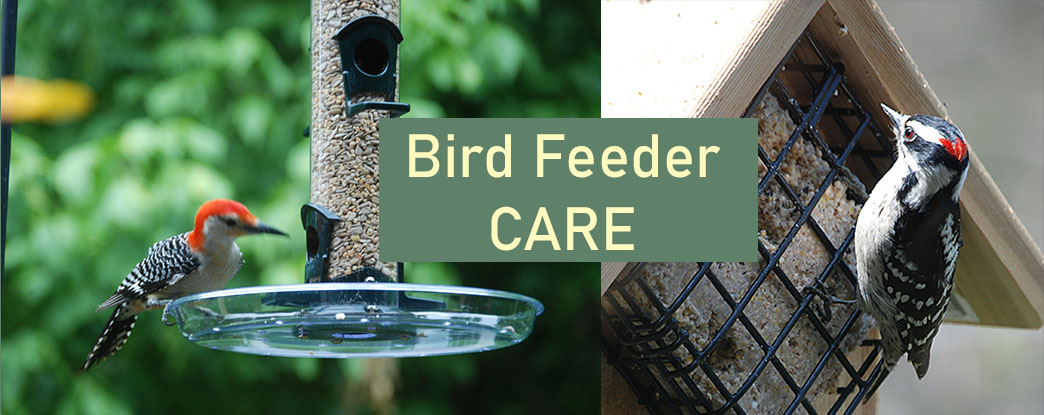
Keeping your feeders clean will help prevent the spread of avian diseases. Keep the following tips in mind when adding food or cleaning your feeders.
On this page
1. Check the seeds
When refilling hopper feeders, tube feeders, etc., make sure any remaining seed is free of mold or mildew. The seed should also be loose in the container, not compacted, so it can flow easily to the feeding areas.
2. Don’t feed too much
Remove old seed or other feed from platform feeders on a regular basis. Try to limit platform feeders to a one or two day supply.
When feeding on the ground, do not disperse more than is consumed in a day or two. Experience will teach you how much to use.
3. Keep feeders clean
If mold or mildew becomes apparent, or the feeders are becoming dirty or soiled, they should be thoroughly cleaned and dried before refilling. Feeders can be soaked in a water/bleach solution (one part bleach to 9 parts water) and then scrubbed well. Dry the feeders well before refilling. You can also use a soap and water mix but be sure to rinse completely.
Related: Useful Tips To Keep Squirrels Out Of Bird Feeders
If you see diseased birds coming to your feeders on a regular basis, you may wish to remove your feeders for couple of weeks to reduce the spread of disease.
4. Wash after feeding
It is good practice to wash your hands after putting out seed and cleaning feeders.
5. Clean under feeders
Large piles of dropped seeds and hulls may attract rodents or begin to germinate. To prevent problems, rake the area below fixed feeders on a regular basis. You may need to add mulch, bark chips, etc. under the feeders to help keep the area clean.
Consider placing pave or patio stones under feeders. Not only decorative, they make it easier to sweep up seed hulls and also make it easy to use an industrial vacuum, which can save a lot of time!
6. Consider a seed tray
Placing a seed tray under a hanging feeder can capture dropped seeds and hulls, making clean up easier.

